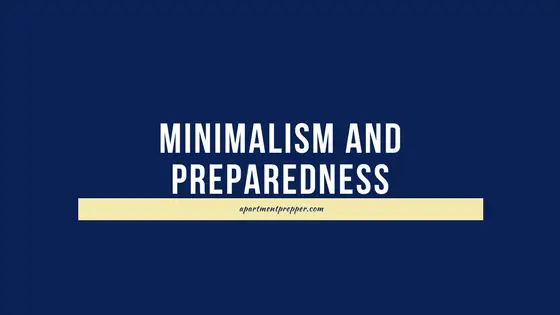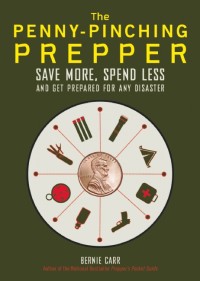This post is by Bernie Carr, apartmentprepper.com
Our apartment is getting smaller! Or it seems that way anyway. The more emergency supplies we acquire, the less free space we have. So I started paring down on items again. This past weekend I donated a box of stuff to Goodwill: outgrown children’s clothing, kitchen gadgets I rarely use, books and CDs that I did not get a chance to sell on Ebay.
I’ve been reading a few sites on minimalism. Some of them seem very drastic: living on 100 things or even 50 things or less is a bit tough when you have a family with kids. But I do admire the intent to reduce reliance on material possessions. When I first started thinking about it, being a prepper and acquiring emergency supplies seemed contradictory to being a minimalist. Especially if you go by “Two is one and one is none.” But if you think about it, preparedness and minimalism can actually go hand in hand.
The key is to examine the differences in “needs.”
Cutting down on so many material possessions and focusing on the minimum items that are truly necessary to live is the first step to being a minimalist. Emergency items, to a prepper, falls under the “needs” category. How many TVs does one family need? Do the kids really need a Wii AND an Xbox 360? One the other hand, if you are stocking up on canned goods, you will need at least 2-3 can openers. Even with preparedness items, you can be selective with what kinds of gadgets do you really need.
I will start the room by room sweep of the apartment and make the hard decisions on what stuff goes and what stuff to keep. In the back of my mind, a little niggly voice will say, what if you need it later and you got rid of it? To which I would remind myself of the old saying “… Make it do or do without!”
The rewarding part will come, as we find newly freed space for the stored food and water, which we do need.
© Apartment Prepper 2011
For more tips on prepping on small budget, read my latest book:



You have a great blog. Keep up the good work! I have a question. A lot of the information on the net and YouTube seems focused on “bugging out”. However, it seems that in most scenarios “bugging in” would be preferred, or as otherwise known, “shelter in place”. I would rather have all my stuff in my apartment than just a 40 pound backpack. In an urban area bugging out in a vehicle will most likely not be an option. The biggest risk I can think of for sheltering in place is fire, which would run rampant in a collapse scenario. Responders would be overwhelmed and, like in the LA riots, wouldn’t want to risk getting shot, etc. So here is my question. What are your thoughts on this situation? The best idea I have come up with is to rent a mini-storage for an offsite cache. Obviously this is not an optimum situation. The storage unit could burn down, you might not be able to get to it, it could be looted, etc. Burying stuff in the ground in LA is also not an option, especially since most of the “ground” is concrete. I would appreciate any ideas you or your readers might have.
Hello, Thanks for the kind comment. Good question, one that we all are concerned about. Storing supplies for bugging is in where I started my preparedness efforts: water, food, sanitation supplies such as TP, trash bags, first aid etc. However, we can’t deny there may come a time when we have to leave in a hurry, especially living in or close to the big city. So once you have a base of supplies, start collecting your “bug out” gear as well. No need to go overboard all at once, just have something you can grab such as a suitcase or backpack that has 72 hours worth of stuff. You may hopefully be able to come back after the crisis is past. I know some areas in LA have mudslides, fires etc that require possible evacuations, so I recommend having something, rather than nothing at all. If you can afford an offsite storage facility, it must be easy to get to, very secure and is temperature controlled, as the heat will affect the quality of the food storage.